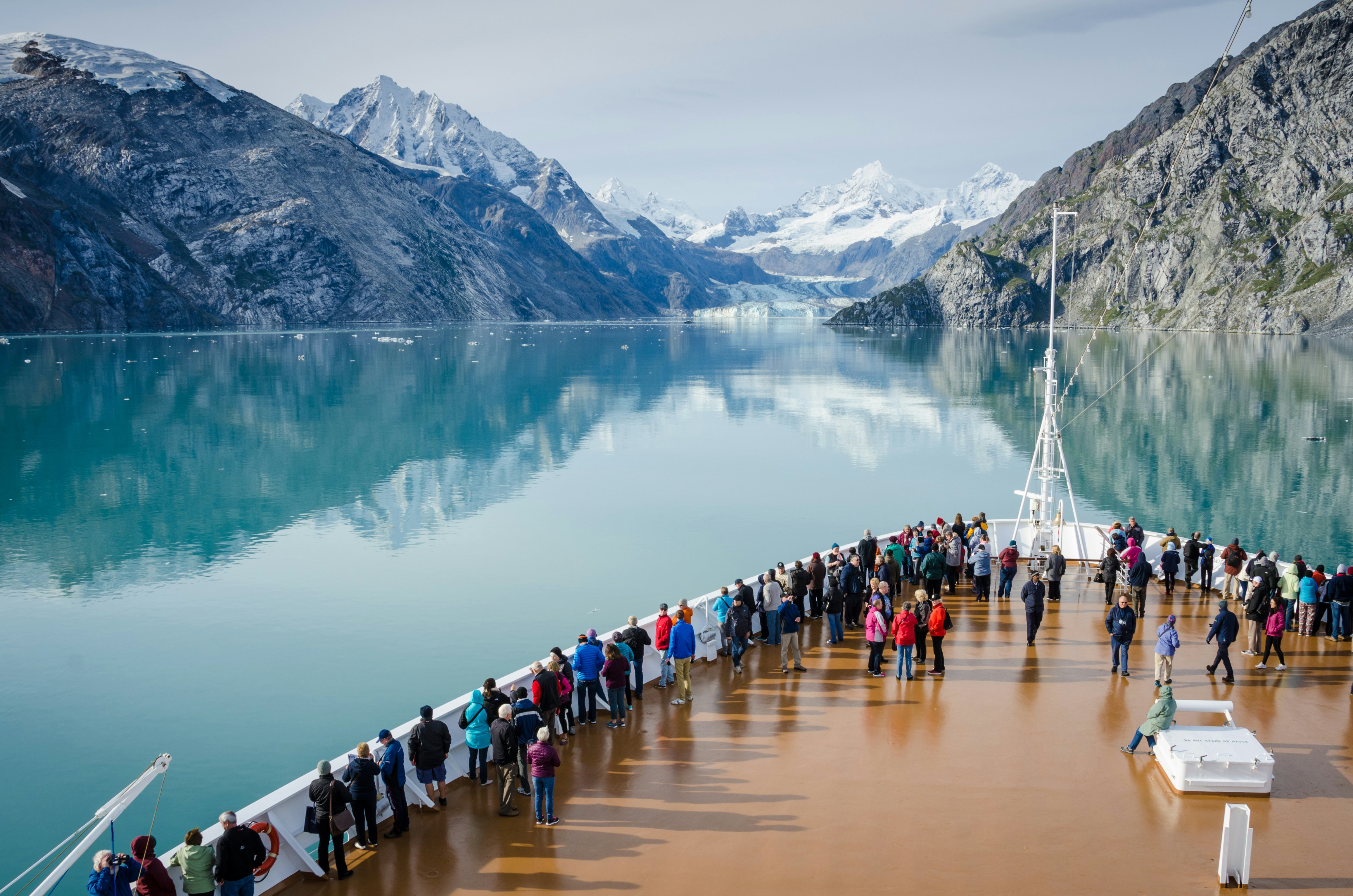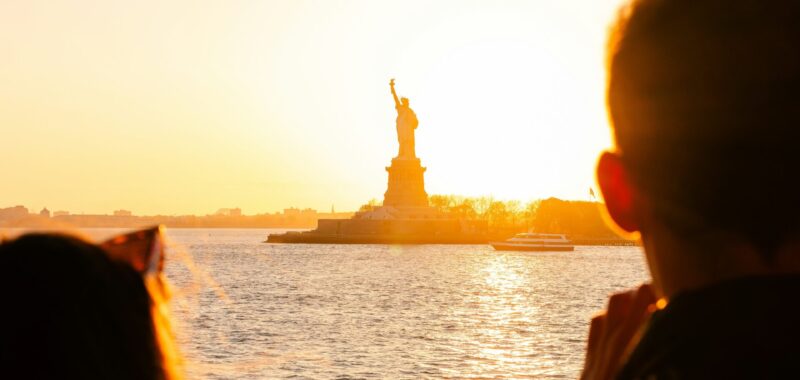The USA’s National Park Service (NPS) operates a whopping 423 national parks, historic sites, battlefields, monuments, lakeshores, seashores, rivers, preserves, reserves…the list goes on! Whether these areas are preserving natural splendor, celebrating vital history,
or protecting places burned into the national conscience, all will
surprise, delight and inform. Each
offers travelers something different, with adventures ranging from the
spiritual to the active to the magical.
Before visiting any US national park, visitors should be aware that staffing cuts in the NPS are having an effect on the amenities available, meaning it’s even more important for visitors to plan ahead and minimize their impact on these treasured sites.
Advertisement

1. See the iconic Statue of Liberty up close
The star of a zillion souvenirs and photos, New York City’s Statue of Liberty National Monument continues to inspire the masses almost 140 years after its dedication. Ride the ferry out, go for a climb inside (reserve well in advance) and don’t miss nearby Ellis Island, where you can find out what happened to the immigrant masses who once gazed with such hope at the statue.
Planning tip: Be sure to include the nearby Governors Island National Monument
in your NYC visit. This former military base sits right in the harbor
and has been transformed into a spectacular park with sweeping views of
the Statue of Liberty and the NYC skyline.

2. Gaze deep into the Grand Canyon
No picture can capture the massive majesty of Grand Canyon National Park.
From viewpoints on the roads along the south rim of Arizona, you can
get glimpses of the muddy Colorado River winding along the bottom far
below. Striations of color in the nearly endless layers of rocks change
with the light throughout the day. The geologic spectacle is nearly
impossible to imagine until you’ve seen it for yourself.
Detour: Southeast of the main Grand Canyon road, off Hwy 89, Wupatki National Monument preserves a beautiful rock city built by Native Americans 900 years ago. It’s one of many national park sites in Arizona and New Mexico that showcase the legacies of the complex cultures that lived here before European contact.

3. Be awestruck at Yosemite
Yosemite National Park
is a playground for the senses and an essential stop for any first-time
visit to California. If you haven’t been, start planning a trip now!
Standing in the valley, with a burbling stream nearby and taking in the
vista of granite El Capitan and Half Dome plus the long, coursing drama of Bridalveil Fall will stay with you for a lifetime. Head up to the high Alpine meadows, where rivers are born amidst elemental beauty.
Advertisement
Planning tip:
Try to visit Yosemite in spring or fall when crowds are fewer and the
colors are either freshly reborn or rich with autumn patinas. If
visiting in the peak summer months, check the park website in advance – reservations are required for some of the busier days.

4. Go beyond the lore at Little Bighorn
A circle of cavalry troops dying to the last man is at the heart of Little Bighorn Battlefield National Monument
in the dry, horizon-filling plains of eastern Montana. The truth about
the events of that June in 1876 is often lost amidst the legend of
Colonel George Custer and his last stand. The story of how the Plains
Indians scored their overwhelming victory at what they called the Battle
of Greasy Grass and the events that led up to it, including Custer’s
genocidal campaign against Native Americans, are told here, putting the
battle into context.
Detour: Although the über-popular Yellowstone National Park
is an easy drive west, consider going east to a circle of spectacular
but lesser-known national parks including Grand-Canyon-like Theodore Roosevelt National Park, soaring Devil’s Tower National Monument (be sure to watch the 1977-movie Close Encounters of the Third Kind first) and the scorching hell of Badlands National Park. Throw in Mount Rushmore National Memorial for the pure kitsch of an American icon.

5. Witness the majestic drama at Glacier Bay
Raw rivers of ice meet the churning waters of the Pacific far north in Alaska at Glacier Bay National Park and Preserve.
It’s nature at its most primal: fjords of water lead to vast granite
mountains cleaved by glaciers, which edge down to the sea where huge
icebergs calve off and float away. Whether
from a cruise ship, a small boat from shore, or by float plane or
helicopter, it’s a spectacle not to be missed, especially given the
threats to the glaciers from climate change.
Detour: Once you’ve ventured north to Alaska, make time for more of the state’s 15 national park sites. For a real odyssey, venture to distant and isolated Kobuk Valley National Park, gaze at the continent’s highest peak at the famous Denali National Park and Preserve, or thrill to tales of the Yukon at the Klondike Gold Rush National Historical Park.

6. Take the plunge at Indiana Dunes
Dismissed by dullards as “flyover country”, Indiana Dunes National Park
is a beautiful rejoinder right along the shores of Lake Michigan in
Indiana. Following the lakeshore, the park offers miles of white-sand
beaches where the sand is actually white (as opposed to the over-hyped “white” of tourism puffery).
In
summer, you can always find a beach to call your own while you swim in
the seasonally warm lake water. At night you can roast marshmallows by
the lights of the Chicago skyline poking above the horizon. Add in hikes
through ancient oak forests, and you’ll understand why the region is
proudly known locally as the Third Coast.
Detour: Barely a half-day’s drive southwest to the center of Illinois in Springfield, the Lincoln Home National Historic Site
captures a glimpse of the life of the man who led the US through the
carnage of the Civil War while articulating ideals of freedom and
democracy that remain as timeless as ever.

7. Step up to the raw Atlantic at Canaveral National Seashore
It’s an easily understood claim: the longest stretch of undeveloped coast in all of Florida is protected by Canaveral National Seashore.
While the name may inspire thoughts of moon launches and space
exploration, this long barrier island of dunes and lagoons is north of
the Cape Canaveral launch facility. It’s a natural wonderland with
thousands of native species of plants and animals that can be explored
on hikes and walks. Or you can just frolic on the fine sand of the
surf-fringed beaches.
Detour: No trip to the Canaveral seashore is complete without a visit to the Kennedy Space Center Visitor Complex,
which honors and explains 60 years of rocket launches that began on
these sandy plains by the Atlantic. Just try to get your head around the
enormous Saturn 5 rocket used for the Apollo missions to the moon.

8. Walk the Boston trail of American Independence
Find out just what was meant by “one if by land, two if by sea” at Boston National Historical Park
in Massachusetts, which brings together dozens of sites great and small
that sparked the Revolutionary War from 1775 onwards. Most are easily
visited following well-documented walking routes such as the Freedom
Trail. On the narrow lanes of this colonial city, it’s easy to be
transported back 250 years as you visit iconic sites as diverse as the Paul Revere House and the Boston Tea Party site.
Planning tip:
Boston’s thicket of historic sites is run by various branches of the
federal and state governments as well as private entities, all with
differing hours and admission policies. While the National Park Service
provides a unifying umbrella, study the list in advance and make a few
selections so you’re not overwhelmed by choice once you’re there.

